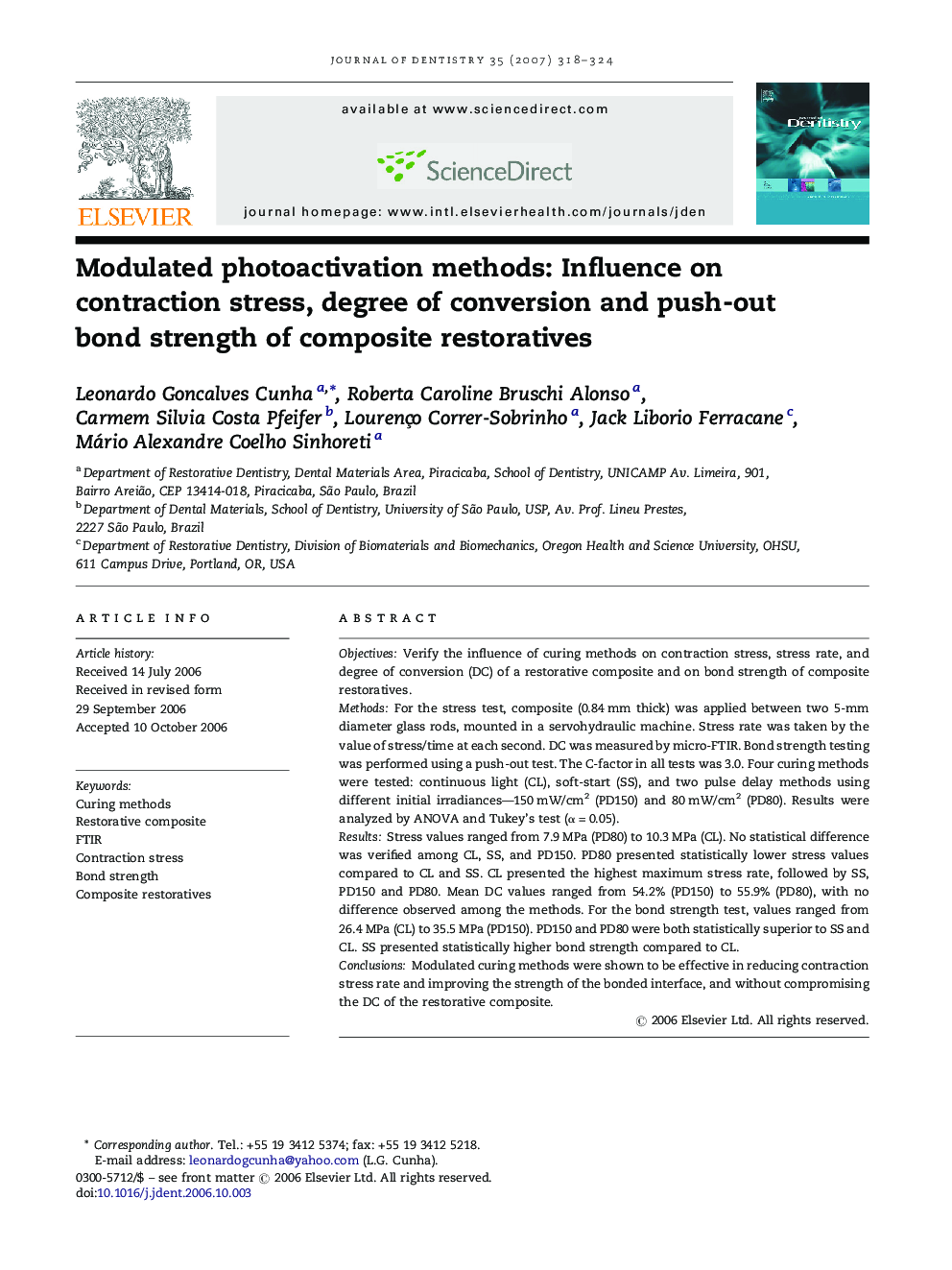| Article ID | Journal | Published Year | Pages | File Type |
|---|---|---|---|---|
| 3146445 | Journal of Dentistry | 2007 | 7 Pages |
ObjectivesVerify the influence of curing methods on contraction stress, stress rate, and degree of conversion (DC) of a restorative composite and on bond strength of composite restoratives.MethodsFor the stress test, composite (0.84 mm thick) was applied between two 5-mm diameter glass rods, mounted in a servohydraulic machine. Stress rate was taken by the value of stress/time at each second. DC was measured by micro-FTIR. Bond strength testing was performed using a push-out test. The C-factor in all tests was 3.0. Four curing methods were tested: continuous light (CL), soft-start (SS), and two pulse delay methods using different initial irradiances—150 mW/cm2 (PD150) and 80 mW/cm2 (PD80). Results were analyzed by ANOVA and Tukey's test (α = 0.05).ResultsStress values ranged from 7.9 MPa (PD80) to 10.3 MPa (CL). No statistical difference was verified among CL, SS, and PD150. PD80 presented statistically lower stress values compared to CL and SS. CL presented the highest maximum stress rate, followed by SS, PD150 and PD80. Mean DC values ranged from 54.2% (PD150) to 55.9% (PD80), with no difference observed among the methods. For the bond strength test, values ranged from 26.4 MPa (CL) to 35.5 MPa (PD150). PD150 and PD80 were both statistically superior to SS and CL. SS presented statistically higher bond strength compared to CL.ConclusionsModulated curing methods were shown to be effective in reducing contraction stress rate and improving the strength of the bonded interface, and without compromising the DC of the restorative composite.
